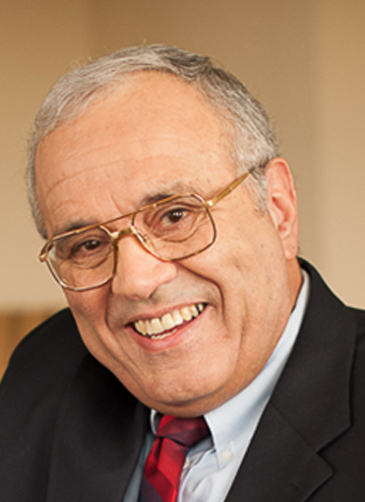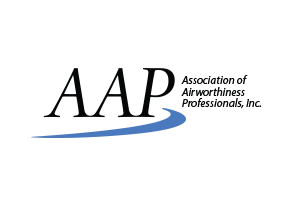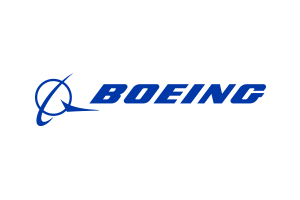Dr. Robert "Bob" J. Bucci, Arconic (formerly Alcoa), Retired
Student Apprentice Years:
After obtaining a B.S. in mechanical engineering from Northeastern University (1964) and M.S. in engineering from Brown University (1967), Bob went on to complete his PhD work at Lehigh University under the guidance of Paul Paris, his research advisor. Upon completing his Ph.D. (1970) Bob joined Del Research Corporation, a Paul Paris established small business firm specializing in fracture mechanics research, testing and training. Through 1973 Bob served as Del Research Vice President of Technology responsible for lab direction and engineering support to enterprise programs focused on expanding fracture mechanics based theories/practices for structural materials evaluation. The 1967-1973 student apprentice years Bob spent at both Lehigh and Del Research coincided with the dawn of Damage Tolerance insertion into government/industry specifications – and it was over this timeframe that Bob learned from many of the "Fracture Mechanics Greats". Bob's contributions to the field over this time period laid important groundwork for the eventual standardization of technique for measuring fatigue crack growth rate (FCGR) and thin material fracture toughness via the R-curve approach. His pioneering work also gave foundation to ΔKth and near-threshold FCGR measurement technique as well as deeper insights on how to more routinely measure and apply crack closure (ΔKeff) based concepts to clarify impacts of precrack, environment, stress ratio, over/under loads and residual stress on FCGR measurement and cyclic life modeling
Alcoa Career - Creating Value through Technology:
In 1973 Bob joined Alcoa where at the Alcoa (now Arconic) Technical Center he held the position of Sr. Technical Consultant before retiring in 2014. Over the course of his Alcoa career, Bob worked many aspects of aluminum product/process development and related technologies, most notably those directed to supporting the needs of Alcoa aerospace product business units with whom he worked closely to facilitate technical marketing and product development/insertion efforts. In doing so, Bob maintained high level technical working relationships with Alcoa customers, government labs, industry committees and academia to leverage R&D. For more than four decades he kept Alcoa at the forefront of developing critical knowledge and capabilities to capture and transition the benefit of Alcoa structural product improvements, particularly in areas related to fatigue, fracture and DADT structural integrity conformance. In the latter portion of his career Bob's role morphed to that of a Sr. Technical Consultant tasked with identifying technology gaps and formulating/applying advanced technical approaches/strategies, including the mentoring of teams and individual researchers to ensure needs are met.
Throughout, Bob leveraged his fatigue and fracture mechanics background, to make significant core contributions to methodologies used in new product development and introduction. He remained an active contributor to the body of knowledge associated with development and deployment of landmark ASTM Test Method Standards (like E399, E647 & E561) and other linked specifications. Many of the results and capabilities added by Bob have and continue to be exploited to define alloy development targets and technically market Alcoa DADT improved alloys (e.g., 7475, 7085, 2524, 2624, Al-Li, …) and product forms (e.g., high quality thick plate, superior stress-relief forgings). Bob's advocacy was also a force in driving Alcoa's turn-of-the-century paradigm shift in aerospace technology strategy from that of continuous (incremental) alloy improvements to one of a solution provider capable of meeting the demanding mission requirements of current and future-generation aircraft - the goal being to strengthen Alcoa's supply chain position while also demonstrating the value of early involvement in design and decision making processes. Bob's main technical contribution to the evolving shift entailed adding to the Alcoa tool box – more structurally representative testing and data to feed newly developed sets of virtual design trade study tools – to thereby enable more rapid demonstration of the improvement potential of higher performing materials combined with innovative design and manufacturing technologies. Now into its second decade, the initiative has produced a number of collaborative and systems based partnerships with government and industry primes to successfully demonstrate viability and readiness of metal intense product/design solutions (e.g., Advance Hybrid Aerostructure and Alcoa "Best" Wing Box & "Best" Fuselage Barrel Solutions) capable of multifold savings in structural weight and cost over existing state-of-the-art.
Other ASIP relevant highlights:
- Under U.S. Air Force Contract developed standard methods for testing and analyzing fatigue crack growth rate (AFML TR 78-40). This work lead to the initial establishment of the ASTM standard test practice E-647 for FCGR measurement, for which Bob is one of the original co-authors.
- Principal contributor to a series of DoD contract efforts (1973-1985) targeted to bring stronger understanding to the role of microstructure on aluminum FCG behavior. Much from this work now appears in the mainstream literature.
- Led industry-wide round-robin testing efforts to evaluate first generation Alcoa P/M, Al-Li and fiber metal laminate trial materials produced on a commercial production scale (1979-1989). The results from each of these efforts provided critical input into the evolving technical/business strategy for commercial product maturation.
- Work over 1984-1999 timeframe to investigate and quantify the role of metallic pore/particle distributions as potential fatigue life limiting features impacting the reliability of metallic aircraft structure. The work cited first clear quantification of fatigue life benefit resulting from refinements to aluminum ingot casting practice made over time, which is especially pertinent to structural components machined from thick plate. The findings also gave rise to a specification basis for SN fatigue testing use to guarantee thick aluminum plate initial fatigue quality. Spin-off from the original work produced several related investigations aimed at identifying fatigue life-limiting feature populations associated with other metallic forms and service environments. The work provided impetus for collaborative work with the USAF Wright Laboratory to measure and corroborate impact of metal quality improvement as well as to give credibility to the EIFS (equivalent initial flaw size) approach to estimate impact of other potential fatigue life-limiting feature populations such as corrosion pits, traffic marks and the like.
- Teamed with TU Delft and others to introduce the concept of fiber/metal laminates to Alcoa and the US - giving rise to an Alcoa partnership leading to broader acceptance of fiber/metal laminate product forms (now known as ARALL® & GLARE®, and hybrid derivatives thereof) as a viable structural skin sheet material or selective reinforcing option for structural light-weighting and aging aircraft repair.
- Under contract to NASA Langley, Bob contributed to a 5-year (1981-1986) interdisciplinary review of environmental characterization practices for aluminum alloy selection and design. The work culminated in advancement of the breaking load method (ASTM-G139) which uses residual strength as the measure of damage evolution (in this case environmentally assisted cracking) enabling greater efficiencies (compared to pass-fail approaches) at discriminating corrosion integrity of differing aluminum products and tempers. Many of the recommendations recorded in the NASA work constitute a key element of today's test practices for alloy development and corrosion prevention/control.
- For much of the 1990s, Bob contributed to a number of DoD/NASA/FAA sponsored activities directed to addressing cracking problems associated with the US aging fleets. The involvement included participation in DoD planning efforts centered on formulating service life extension technology strategies and implementation plans for the US aging fleet. Over this period Bob provided considerable new information and data to: 1) assist the Air Force and their contractors develop strategies for introducing newer improved aluminum materials as replacement options for legacy materials; and 2) offer guidance on how to address material characterization issues key to reliable integration of corrosion effects into fracture mechanics based lifing methodology.
- Over the years Bob added much to support the Alcoa forging business. However, he was also among the first to recognize that broader forging acceptance into primary structure would require development of new experimental and analytical protocols to address problematic issues associated with bulk residual stresses induced by the forge process. For more than two decades, Bob and co-workers under his direction made significant contribution toward defining a pathway for how this might be addressed – in particular, by bringing to the table much data with interpretation to better explain impacts of residual stress on measurement of forging mechanical properties and allowables. The outgrowth of this work not only broadened forging acceptance (e.g., F-35 large aluminum bulkheads), but also served as a guiding influence to the AFRL Metal Affordability Initiative MAI GE-9 (Standardization of Residual Stress Modeling and Measurement Techniques) and MAI BA-11 (Incorporation of Residual Stress Modeling into Next Generation Design, Manufacturing and Sustainment for Advanced Airframe Structures) Programs completed during the 2009 -2016 timeframe. These efforts and other follow-on activities such as the ongoing MAI LM-07 program embody the very epitome of progress toward demonstrating high value vision of contemporary ICME (integrated computational materials engineering) - to design and certify structures, the materials and processes that comprise them via linking material/process models and data across the relevant length scales of all stakeholders involved.
Professional Activities:
Bob has been a long standing active member of ASTM and ASM International, both awarding him the status of Fellow. He is also a long term member of AIAA. Bob has served on numerous industry/national advisory committees and working groups to provide R&D direction in areas of aluminum application development and testing standards for weight sensitive, high performance structures. He has been a regular presenter at ASIP, ASTM, ASM AeroMat, and other related conference/workshop events and has published extensively.
Awards:
- Iain Finnie Memorial Award (2013) - for significant and sustained impact on residual stress technology over a long career.
- ASTM International Award of Merit & Fellow (2005) - for exceptional, sustained contributions within Committee E-08 on Fatigue and Fracture to the development of standard test methods for fatigue crack growth rate and fracture resistance testing and their application to components and structures.
- ASM International Fellow (2000) - for outstanding contributions to the development of fatigue and stress corrosion cracking methods for evaluating durability of aerospace structures.
- Alcoa Arthur Vining Davis Award for Technical Team Achievement (1997) - for outstanding technical team achievement for developing and implementing the Alcoa Proprietary Quench + Cold Work forging stress relief process.
- Alcoa Laboratories Merit Award (1991) - for continuous mentoring, teamwork and research expertise in development of Fiber Metal Laminates and other material development programs (1991).
- Alcoa Best Technical Paper Award (1986) – "The Breaking Load Method: A New Approach for Assessing Resistance to Growth of Early Stage Stress Corrosion Cracks," Proc. Int'l Conf. on Fatigue, Corrosion Cracking, Fracture Mechanics, and Failure Analysis, ASM, 1986, pp. 267-277.

Dr. Robert "Bob" J. Bucci, Arconic (formerly Alcoa), Retired
Previous ASIP Award Winners
| Year | Lincoln Award Winners |
|---|---|
| 2023 | Mr. Chris Maddox |
| 2022 | Dr. Lawrence M. Butkus |
| 2021 | Dr. Dale L. Ball |
| 2020 | Delayed Until 2021 |
| 2019 | Mr. Ko-Wei Liu |
| 2018 | Dr. Robert "Bob" J. Bucci |
| 2017 | Mr. Robert J. Burt |
| 2016 | Dr. Anders Blom |
| 2015 | Mr. Ed Ingram |
| 2014 | Mr. Larry Perkins |
| 2013 | Dr. Thomas R. Brussat |
| 2012 | Mr. James L. Rudd |
| 2011 | Mr. Len Reid |
| 2010 | Professor Graham Clark |
| 2009 | Mr. Robert M. Bader |
| 2008 | Dr. Joseph P. Gallagher |
| 2007 | Dr. Alan P. Berens |
| 2006 | Dr. Ulf G. Goranson |
| 2005 | Mr. Charles R. Saff |
| 2004 | Mr. Robert Bell |
| 2003 | Mr. Ward Rummel |
| 2002 | Mr. Royce Forman |
| 2001 | Prof. James C. Newman, Jr. |
| 2000 | Prof. Alten Grandt, Jr. |
| 1999 | Prof. Jaap Schijve |
| 1998 | Mr. Thomas Swift |
| 1997 | Mr. Charles F. Tiffany |
| 1996 | Dr. John W. Lincoln |
| Year | Manager of the Year Award Winners |
|---|---|
| 2022 | Jessie W. Martin |
| 2021 | Gregory T. Wood |
| 2020 | Delayed Until 2021 |
| 2019 | Richard B. Tayek |
| 2018 | Travis L. Reese |
| 2017 | Jon Kimmel |
| 2016 | Wirt Garcia |
| 2015 | Robert E. Bair |
| 2014 | David K. Wilkinson |
| 2013 | Darren B. Fritz |
| 2012 | Rodney Harberson |
| 2011 | Bryce Harris |
| 2010 | Paul D. Currie |
| 2009 | Michael P. Blinn |
| 2008 | Mike Sneed |
| 2007 | Mark L. Thomsen |
| 2006 | Peter J. Christiansen |
| 2005 | J. Alex Gaskin |
| 2004 | Alfred A. Clark |


